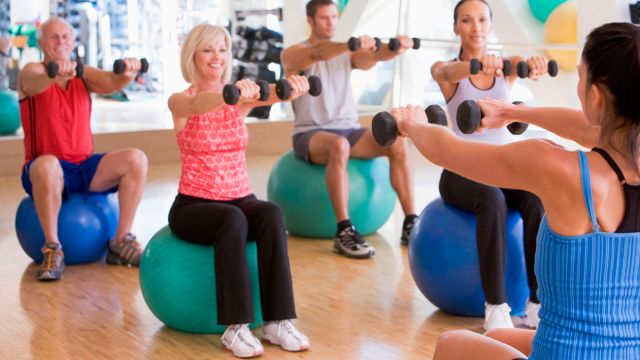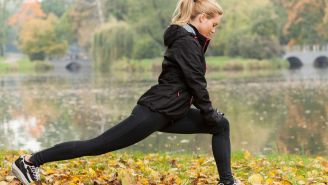If you’re in your 50s, your dreams of Olympic gold are probably over, but that doesn’t mean you need to feel old. A study published in June 2016 showed a drop in physical performance between ages 50 and 59, coupled with a low level of physical activity--that’s a recipe for having an older RealAge.
“No one should be surprised that people start to decline in physical abilities in their 50s. We reach our peak physical abilities in our 20s and early 30s,” says Keith Roach, MD, Sharecare’s chief medical officer and co-creator of the RealAge Test. “That being said, staying active can maintain that level of physical ability much longer than if you stop exercising.”
Daily Steps and Physical Challenges
The study, carried out by researchers at Duke University and published in Journals of Gerontology: Medical Sciences, studied 775 people from 30 years old to over 100. Researchers monitored the participants’ average daily steps and minutes of physical activity per day, as well as their performance in four physical tests: standing on one leg, standing up from a seated position repeatedly for 30 seconds, a walking speed test of four meters and a six-minute walk.
All metrics showed a significant decline with increasing age, with three of the four starting in the 50 to 59 age group. The balance test declined by 19%, from 55.1 seconds for 40 to 49-year-olds to 44.8 seconds for 50 to 59-year-olds; chair stands decreased from 19.4 times in 30 seconds to 17.2; and the six-minute walk decreased from 680.7 yards to 654.7 yards.
Even the baseline totals for steps and activity— about 7,000 steps per day and 40 minutes of activity per day for people between ages 50 and 59—were low, according to Dr. Roach. “It’s sad how little people are doing,” he says. “Seven thousand steps per day is not good. Four thousand is sedentary. We want people taking at least 10,000.”
Stopping the Clock
You may never be as fit as a professional athlete, but it’s never too late to be the fittest version of yourself, says Roach.
Here are three ways to slow the march of time—and keep your RealAge young.
1. Move more. Roach says everyone should take at least 10,000 steps per day (he averages about 20,000). “It only takes about 10 minutes to get 1,000 steps,” he says. “It’s not hard to do.” Roach recommends for people who take public transportation to get off one stop early and walk the rest of the way to your destination. Another trick is pacing while on the phone.
2. Lift weights. You don’t have to be setting world records, but a little resistance training can have surprising benefits. Getting stronger will also improve your balance. “Strength training not only helps with balance and coordination, but it helps keep your bones strong,” says Roach.
3. Do yoga. Doing yoga now can set yourself up for a safer, more active lifestyle when you’re older. One out of three people over age 65 fall every year, leading to injuries, hospitalization and even death. Plus, fear of falling can lead to anxiety and reduce confidence. A 2014 systematic review of 15 studies found that yoga may increase balance, in addition to keeping your muscles flexible.






